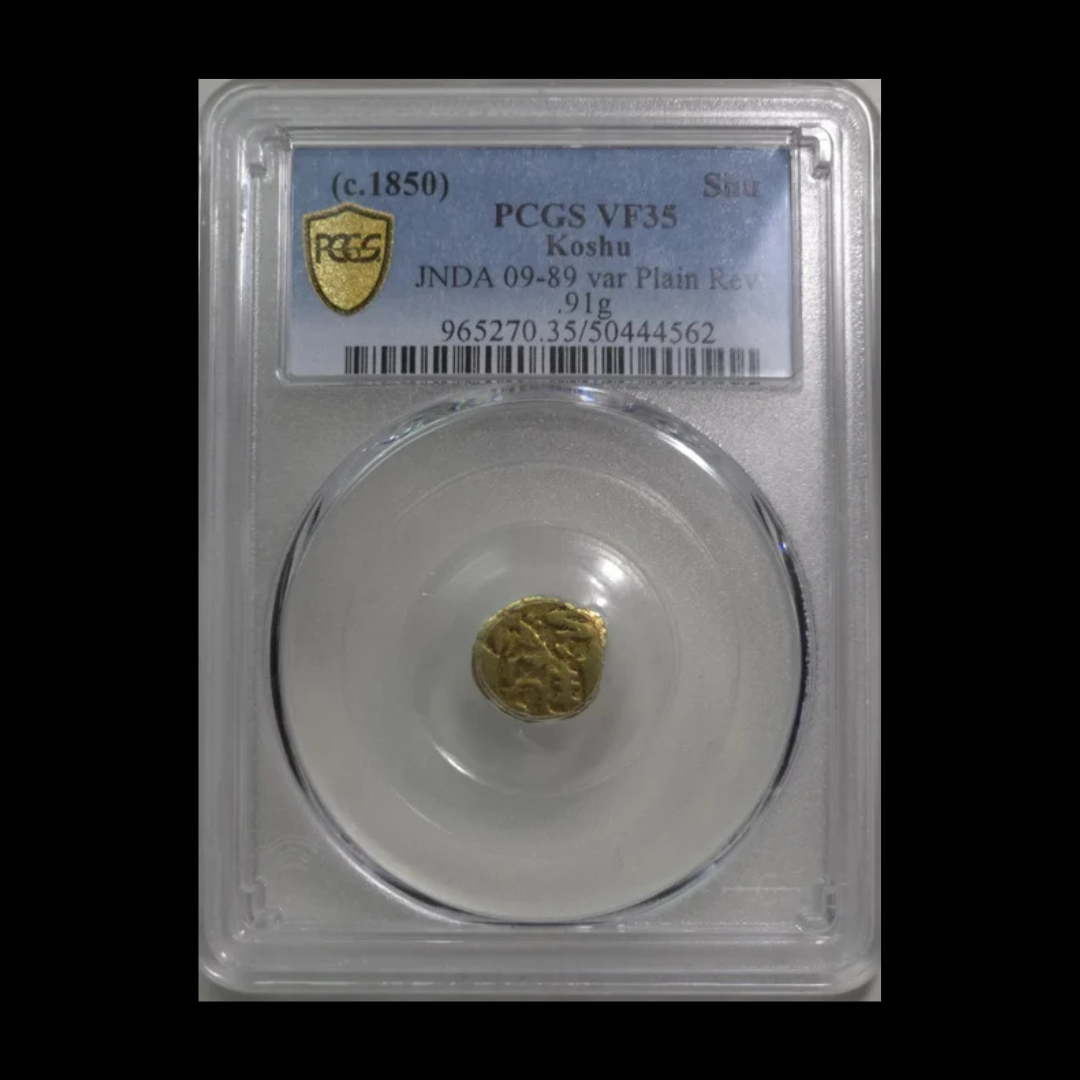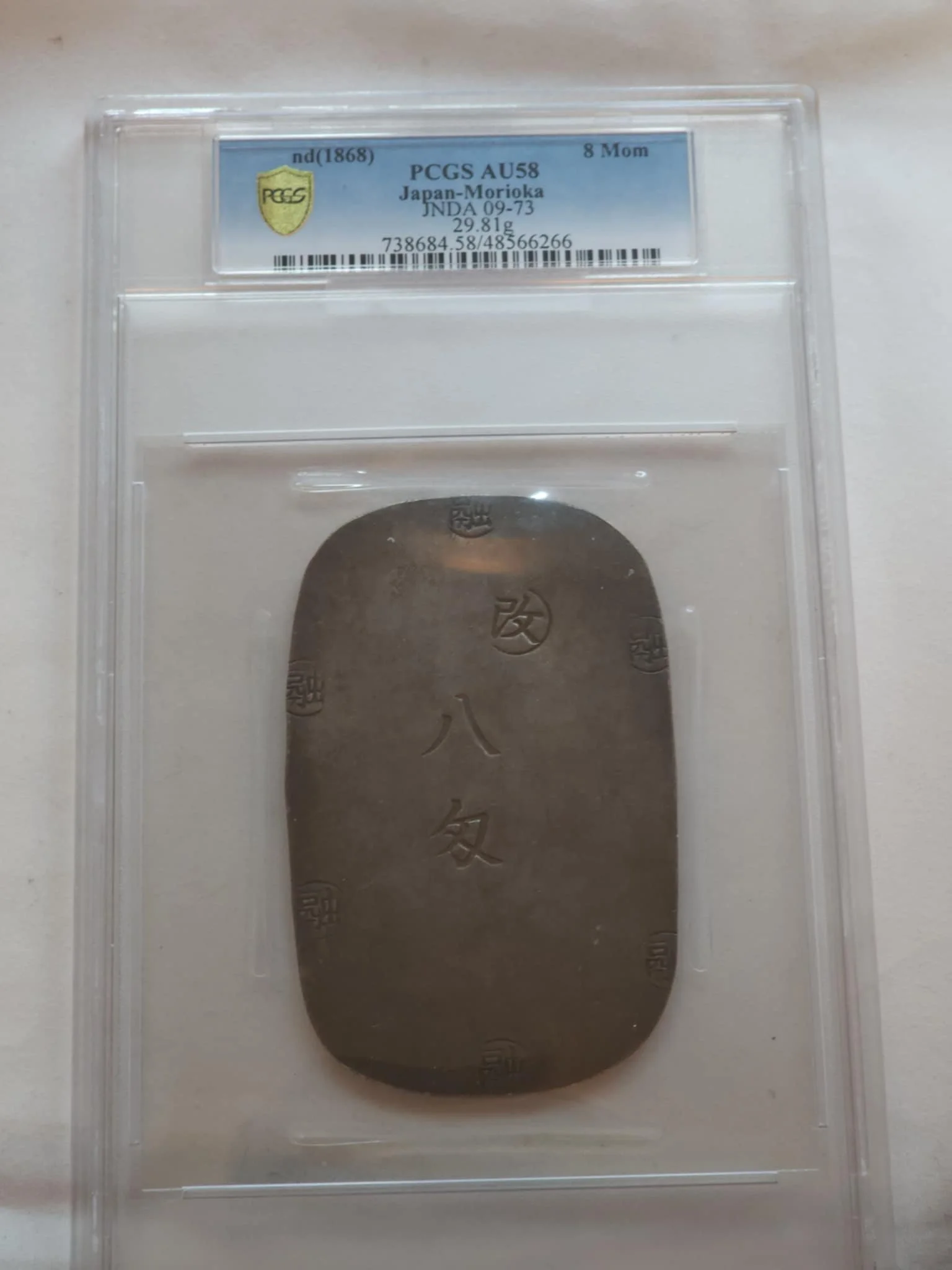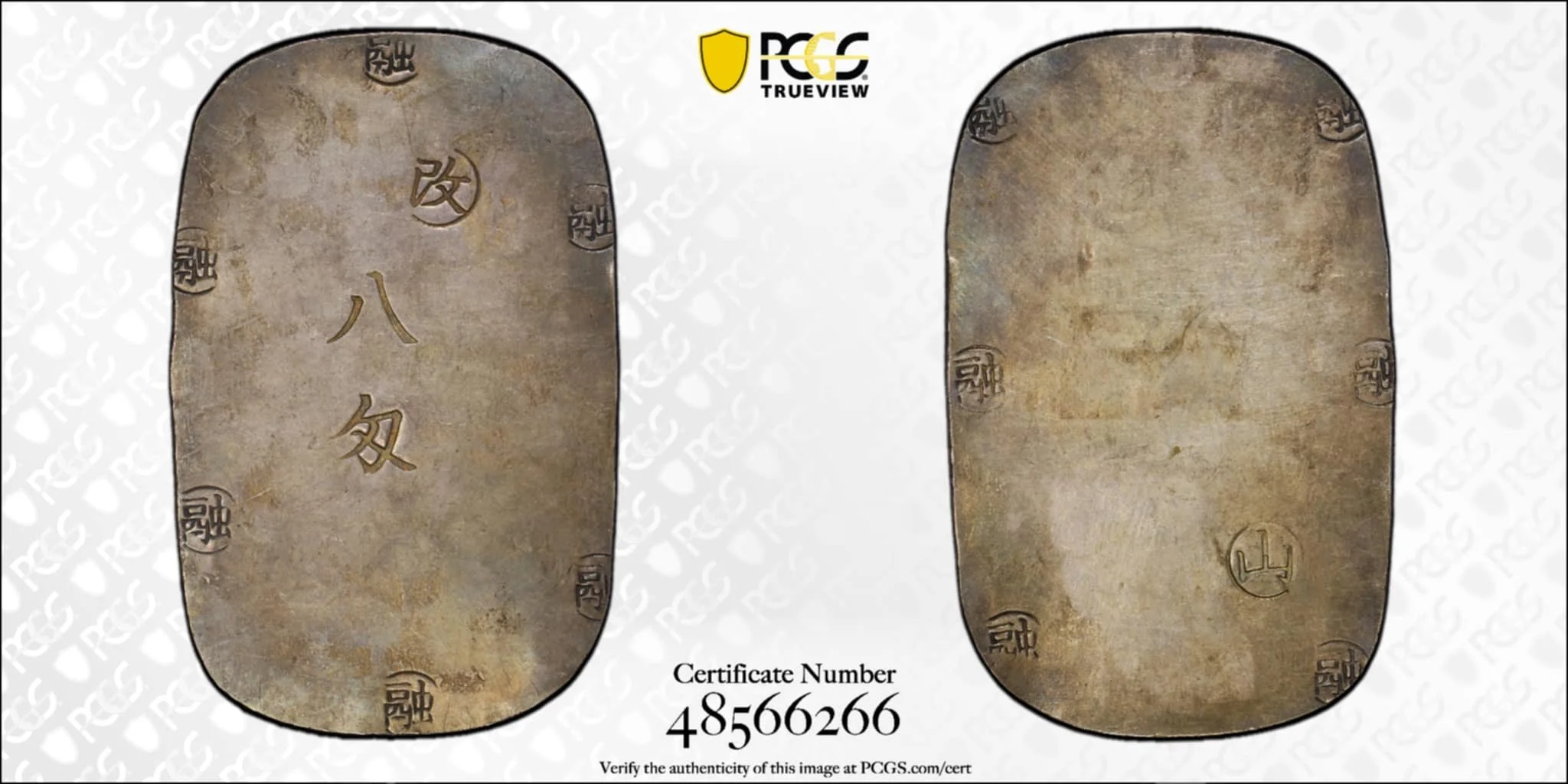 Image 1 of 4
Image 1 of 4

 Image 2 of 4
Image 2 of 4

 Image 3 of 4
Image 3 of 4

 Image 4 of 4
Image 4 of 4





Japan — Akita Province, 4 Momme 6 Bu, Man’en Era (c. 1863), JNDA 09-72, PCGS AU55 (c. 160 years old)
Japan – Akita Province – 4 Momme 6 Bu, Man’en Era (circa 1863)
JNDA 09-72 | PCGS AU55
A rare and evocative relic from the final years of Japan’s Samurai era, this large rectangular silver coin was struck in Akita Province during the Man’en era (circa 1863), as the centuries-old Tokugawa Shogunate stood on the brink of collapse. Just five years later, the Meiji Restoration would sweep away the feudal order — and with it, the provincial coinages that had defined Japan’s economy for over 250 years.
This hefty 4 momme 6 bu piece, measuring an impressive 40 × 62 mm, was produced under the authority of the Akita mint, with bold hand-engraved inscriptions and official hallmarks attesting to its silver purity. Its weight, size, and unmistakable ingot style set it apart from most contemporary world coinage, making it as much an artifact as a medium of exchange.
Certified PCGS AU55, this example offers strong detail, bright silver surfaces, and excellent preservation for a type that is often encountered with damage, chopmarks, or harsh cleaning. Its survival in such condition is a testament to careful handling over more than 160 years.
For the collector, it represents not just a coin, but a tangible link to the Samurai age — a piece of silver that may have passed through the hands of merchants, samurai retainers, or provincial officials in one of the most transformative decades in Japan’s history.
Japan – Akita Province – 4 Momme 6 Bu, Man’en Era (circa 1863)
JNDA 09-72 | PCGS AU55
A rare and evocative relic from the final years of Japan’s Samurai era, this large rectangular silver coin was struck in Akita Province during the Man’en era (circa 1863), as the centuries-old Tokugawa Shogunate stood on the brink of collapse. Just five years later, the Meiji Restoration would sweep away the feudal order — and with it, the provincial coinages that had defined Japan’s economy for over 250 years.
This hefty 4 momme 6 bu piece, measuring an impressive 40 × 62 mm, was produced under the authority of the Akita mint, with bold hand-engraved inscriptions and official hallmarks attesting to its silver purity. Its weight, size, and unmistakable ingot style set it apart from most contemporary world coinage, making it as much an artifact as a medium of exchange.
Certified PCGS AU55, this example offers strong detail, bright silver surfaces, and excellent preservation for a type that is often encountered with damage, chopmarks, or harsh cleaning. Its survival in such condition is a testament to careful handling over more than 160 years.
For the collector, it represents not just a coin, but a tangible link to the Samurai age — a piece of silver that may have passed through the hands of merchants, samurai retainers, or provincial officials in one of the most transformative decades in Japan’s history.


















